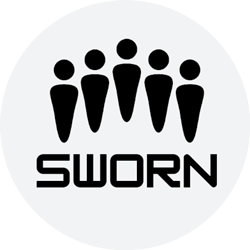First responders face alarming health risks: police officers in the U.S. have an average life expectancy of just 57 years, with heart attacks occurring 5x more often than in the general population. Additionally, 85% report mental health struggles, including PTSD and depression. Suicide is now the leading cause of death in this group.
AI tools like SWORN.ai are stepping in to help. By analyzing real-time data from wearables, job stress metrics, and personal feedback, these platforms create tailored wellness programs to address both physical and mental health challenges. Here’s how it works:
- Wearables track key metrics like heart rate, sleep, activity, and stress in real time.
- Data from work systems (e.g., dispatch logs, workload records) is analyzed to measure stress and fatigue.
- Private surveys gather insights on personal and job-related challenges.
The result? Personalized plans that monitor health risks, provide custom recommendations (e.g., stress relief techniques, sleep tips), and adjust in real time based on changing needs.
Why AI Outperforms Traditional Programs
- AI Wellness Plans: Use biometric, workload, and survey data to provide real-time, evolving support.
- Traditional Programs: Rely on occasional check-ins and generalized advice.
Agencies adopting AI should focus on system integration, data privacy, and combining AI recommendations with support from peers and professionals. Early intervention and prevention are key to improving outcomes for first responders.
Here’s how AI is being used to help improve your mental health
Data Collection and Analysis Methods
Here’s how SWORN.ai gathers and processes data for its insights.
Health Tracking Through Connected Devices
Wearable devices monitor metrics like heart rate, sleep patterns, activity levels, and stress in real time. This allows the AI to detect potential health issues early, giving users a chance to address them before they become serious.
Measuring Job Stress and Fatigue
SWORN.ai evaluates stress and fatigue levels by analyzing multiple data sources:
- Computer-Aided Dispatch (CAD): Tracks call volumes and types of incidents to assess workload intensity.
- Records Management System (RMS): Reviews workload distribution and operational demands.
- Private Surveys: Collects feedback on financial wellness, personal relationships, and job-related experiences.
By combining these data points, the system identifies trends and warning signs of burnout. These insights feed directly into customized wellness plans for each responder.
Data Protection Standards
To ensure privacy, the platform uses encryption protocols and strict access controls that comply with HIPAA regulations. Key measures include:
- Encrypting all data with HIPAA-compliant methods.
- Enforcing role-based access controls to limit data access to authorized individuals.
With these safeguards in place, the AI can securely create and update personalized wellness plans in real time (see next section).
sbb-itb-aa48905
Creating Individual Wellness Programs
SWORN.ai uses secure biometric and workload data to design wellness plans tailored to each responder’s evolving needs. Let’s break down how these insights lead to targeted actions.
Early Warning System for Health Risks
The AI monitors key health indicators like heart rate variability, sleep quality, stress levels, and shift intensity. If it spots concerning trends, it flags them early and activates interventions within the wellness plan to address potential issues before they escalate.
Personalized Health Recommendations
SWORN.ai analyzes a wide range of data to provide tailored advice across different wellness areas. This includes guidance on physical training, improving sleep, managing stress, and balancing support from peers, family, and professionals.
Real-Time Plan Adjustments
These wellness plans are designed to evolve in real time. If the system detects increased stress or workload, it can adjust exercise routines, schedule additional recovery time, or suggest specific stress-relief techniques. For example, it might lower exercise intensity, recommend extra rest, or provide sleep improvement tips. This flexibility ensures the plans stay effective and aligned with the responder’s current needs.
Results and Implementation Guide
When personalized plans are rolled out, agencies often see noticeable improvements but also encounter practical setup challenges.
Common Setup Hurdles
Agencies need to address several issues during implementation. These include securely anonymizing biometric and health data, setting up wearables for continuous monitoring, and ensuring seamless integration of this data with CAD and RMS platforms.
AI vs. Standard Wellness Programs
AI-powered wellness solutions are built on real-time biometric data and workload analytics, offering advantages over traditional programs. These platforms can handle multiple data streams – like biometric readings, workload metrics, and private survey responses – at the same time. Using advanced analytics, they provide tailored, real-time support.
On the other hand, traditional wellness programs often depend on occasional check-ins and generalized advice. AI solutions go beyond this by continuously monitoring data, adjusting recommendations instantly, offering tailored interventions, and identifying long-term trends to enable predictive care.
Conclusion: Next Steps in First Responder Care
To successfully roll out AI-driven wellness plans, agencies should prioritize a few key strategies for effective implementation.
AI’s ability to analyze multiple data sources at once – like wearable devices and CAD/RMS events – offers real-time, personalized support that adapts to the evolving needs of first responders.
For agencies planning to adopt AI-powered wellness programs, three critical steps can pave the way:
- Integrate systems: Ensure wearables, CAD/RMS, and wellness platforms work together seamlessly for continuous data flow.
- Protect privacy: Use anonymization and encryption to comply with HIPAA standards while maintaining real-time functionality.
- Provide comprehensive support: Combine AI recommendations with resources from peers, families, and professionals to create well-rounded care.
Focusing on early intervention and preventive measures can help reduce mental health challenges, lower resignation rates, and address rising concerns like suicide. Agencies should also track outcomes, adjust strategies based on ongoing data, and keep engagement levels high to ensure long-term success.





